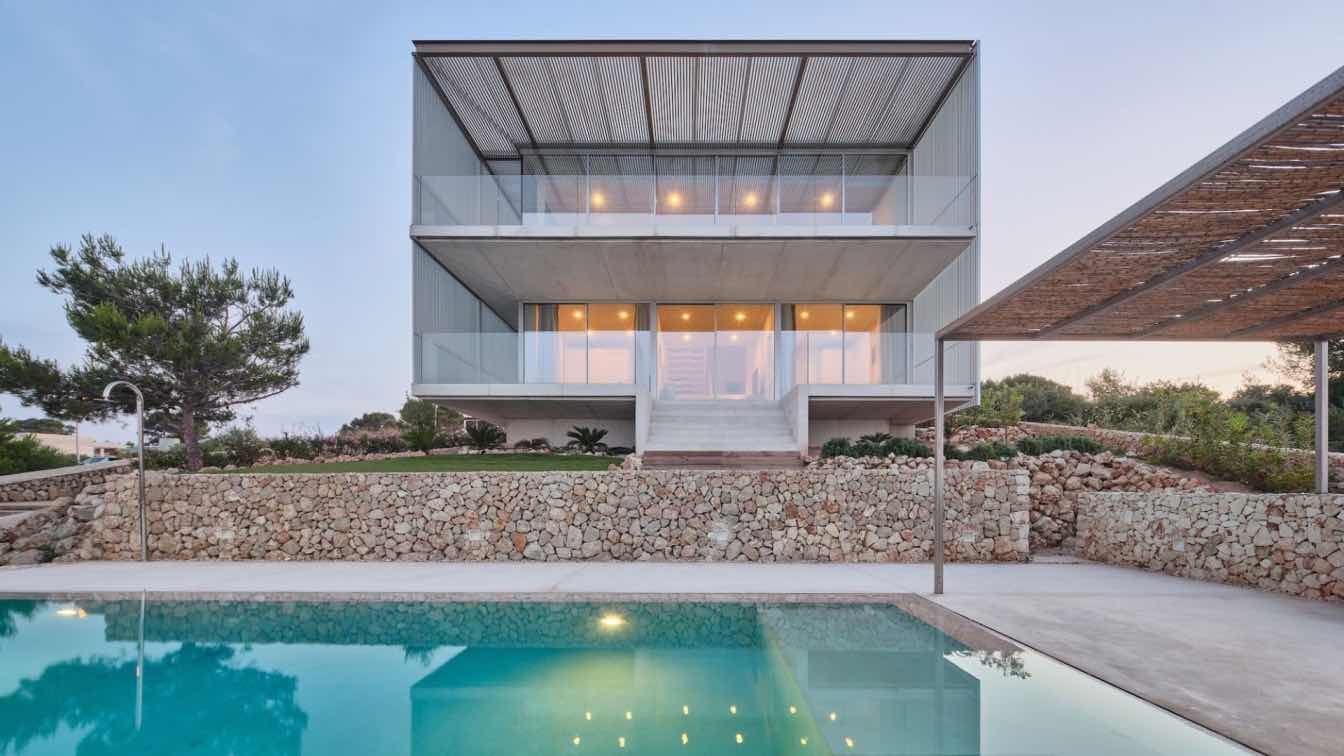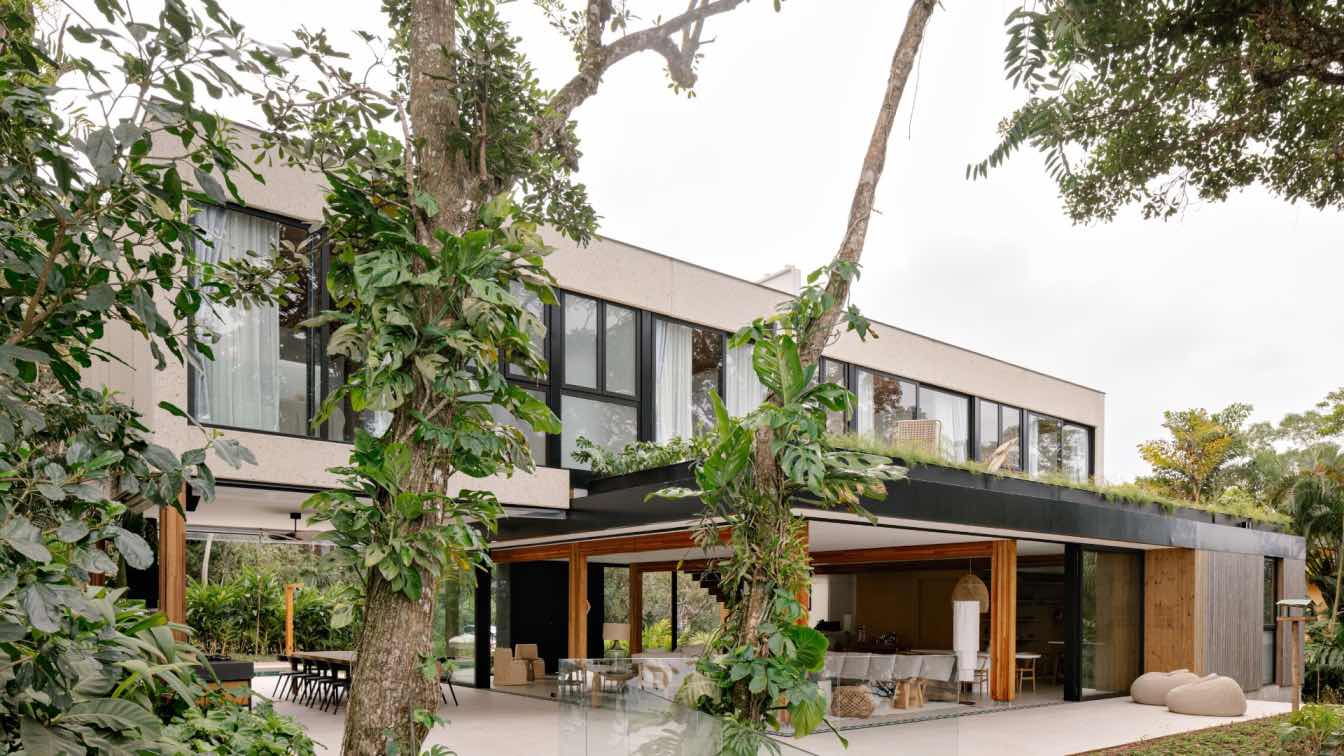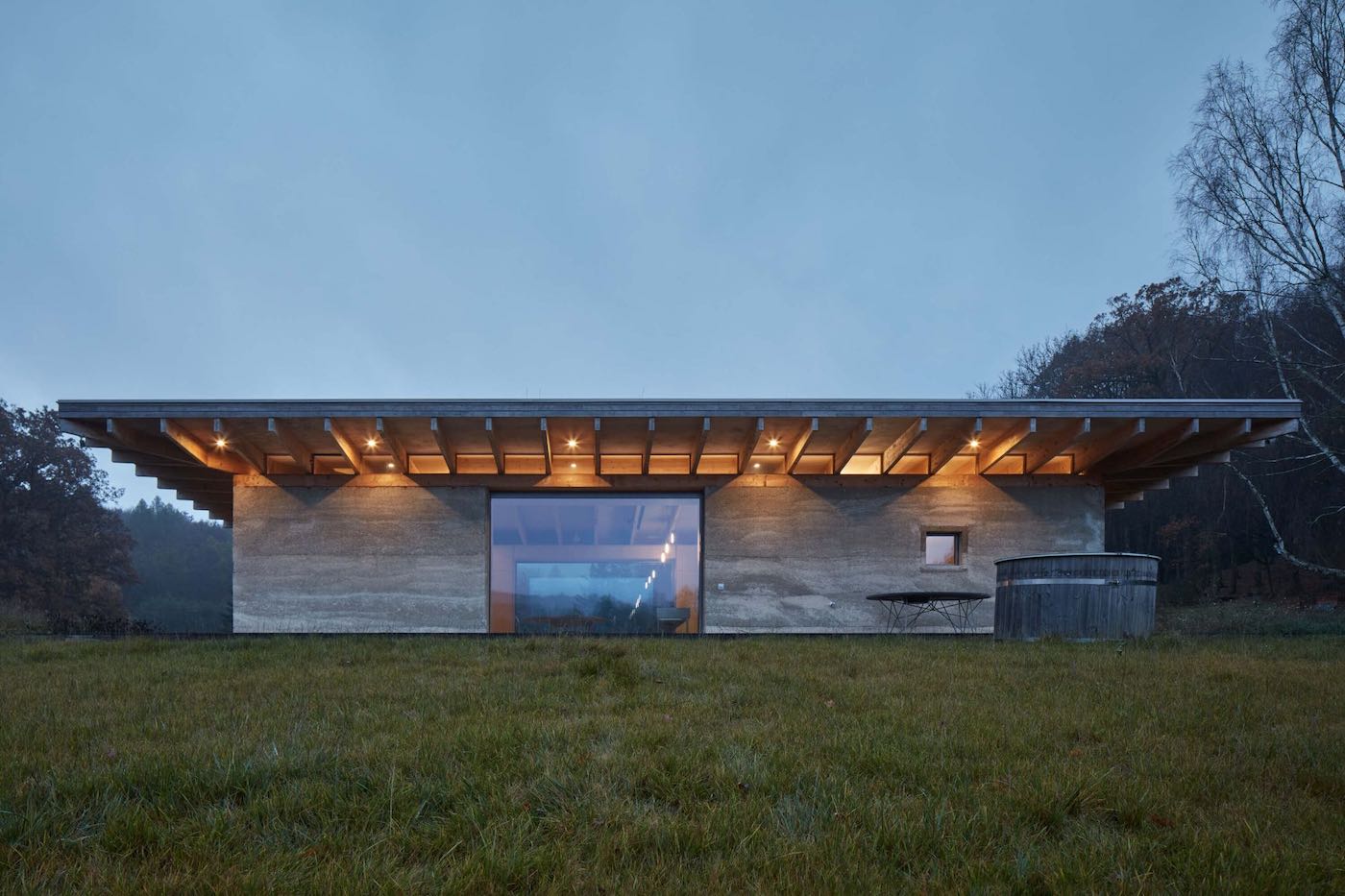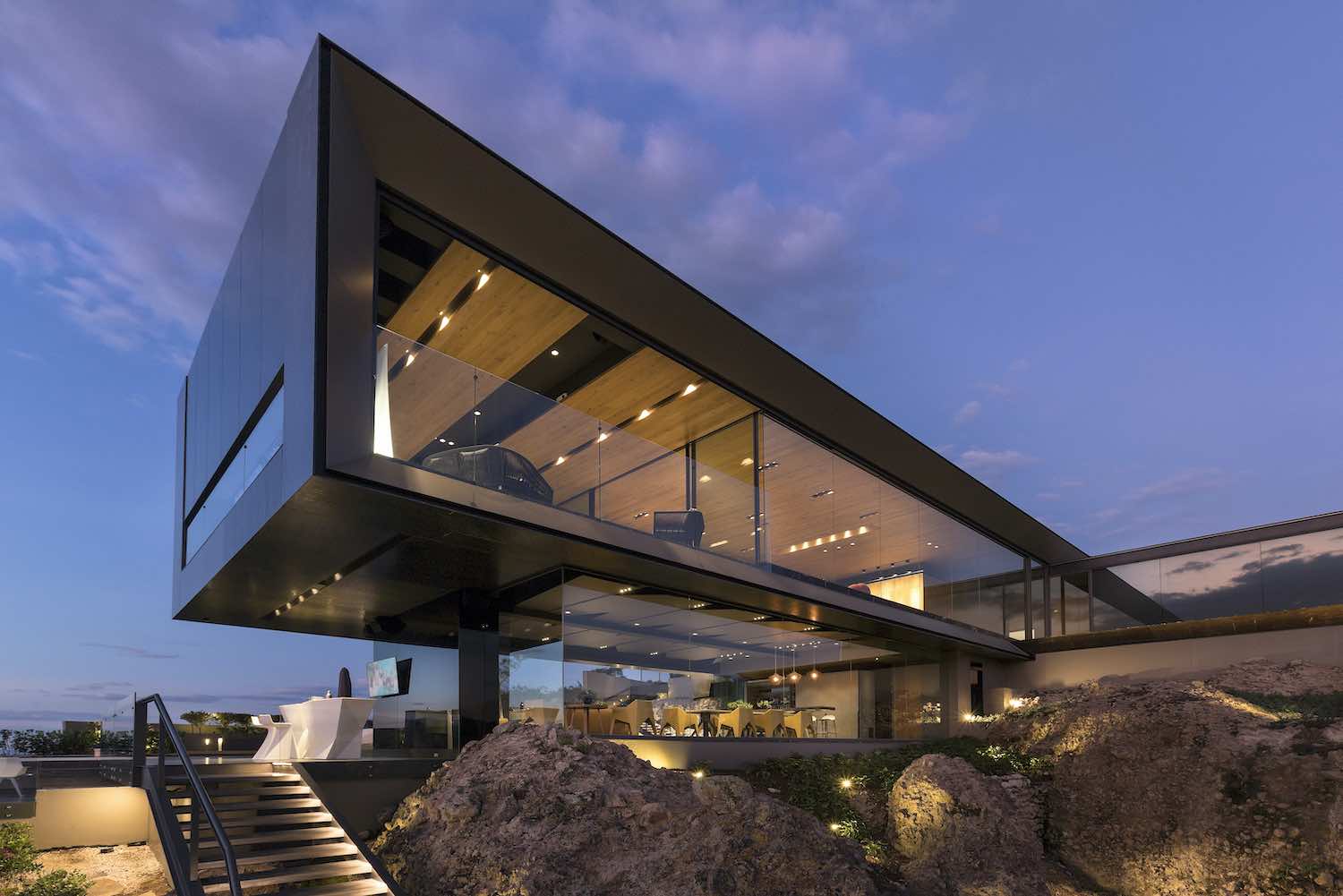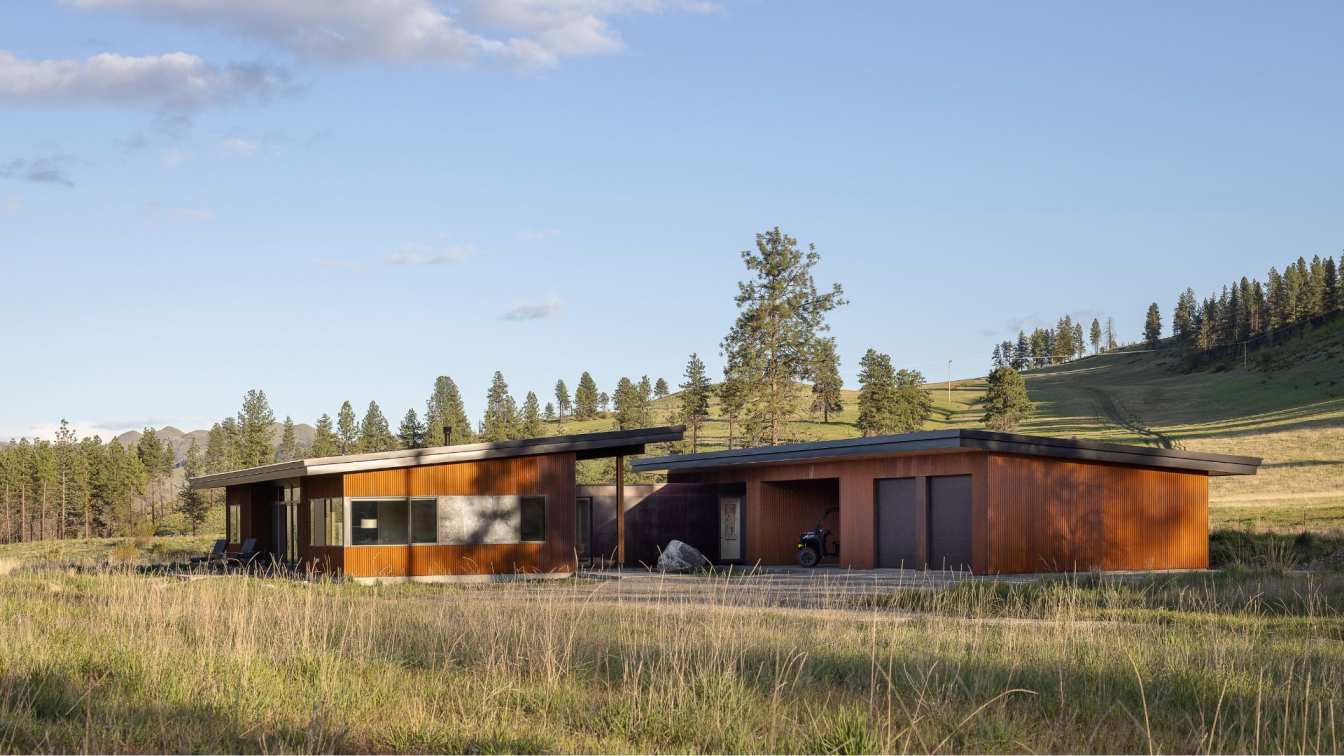Nomo Studio: The house is conceived as a monolithic volume with refined geometry, suspended over a steeply sloping topography. Access is through an intermediate level, via a recessed entrance in a completely blank façade, which reinforces the perception of mass and opacity in contrast with the lightness of the main volume. The concrete platforms leading to the house replicate the effect of suspension, establishing a formal dialogue with the building and accentuating the sensation of floating above the ground.
The envelope, rigorously and minimally composed, derives its richness from the treatment of its three essential materials: concrete, metal, and glass organized in large surfaces interrupted by vertical bands that emphasize the proportion and modulation of the whole. The materials are displayed in their purest state, without cladding or embellishment, encouraging natural aging that enhances the contrast between the solidity of the concrete and the lightness of the aluminum and glass. The mixed concrete, present both inside and out, reveals meticulous work in the arrangement of the formwork, where precise grooves highlight the repetition of segments and the integration of construction elements— lighting fixtures, drip edges, embedded rails, and concealment systems—within a coherent tectonic logic.
A system of vertical-profile louvers—both fixed and movable—acts as a mechanism for regulating light and views. These filter sunlight, provide privacy, and at the same time, allow for views from the interior. The double skin created between the glazed enclosure and the louvers forms an intermediate shaded space, an ambiguous zone between inside and outside that is incorporated into the home through large sliding glass doors. Throughout the day, the interaction between light and materiality generates a mutable perception of the envelope, where the chromatic variations of concrete, aluminum, and glass absorb and reflect the atmosphere of the surrounding landscape.
The interior entry is resolved through a wood-paneled vestibule, whose warmth provides a counterpoint to the mineral expressiveness of the structure. A metal staircase, lightly traced with a minimal structure, connects the different levels in a vertical sequence permeable to light. The layout of the program is organized around an open-plan spatiality, where living, kitchen, and dining areas intersect in an “L”- shaped floor plan, allowing the kitchen to recede into the background without losing continuity with the rest of the space. The connection to the garden is formalized through a spacious transitional area that reinforces the fluidity between interior and exterior.
The interior atmosphere is defined by the commanding presence of exposed concrete slabs, freestanding metal elements, and large glazed surfaces that blur the boundaries, establishing a direct relationship with the landscape and enhancing a spatiality that fluctuates between opacity and transparency, solidity and weightlessness.




























